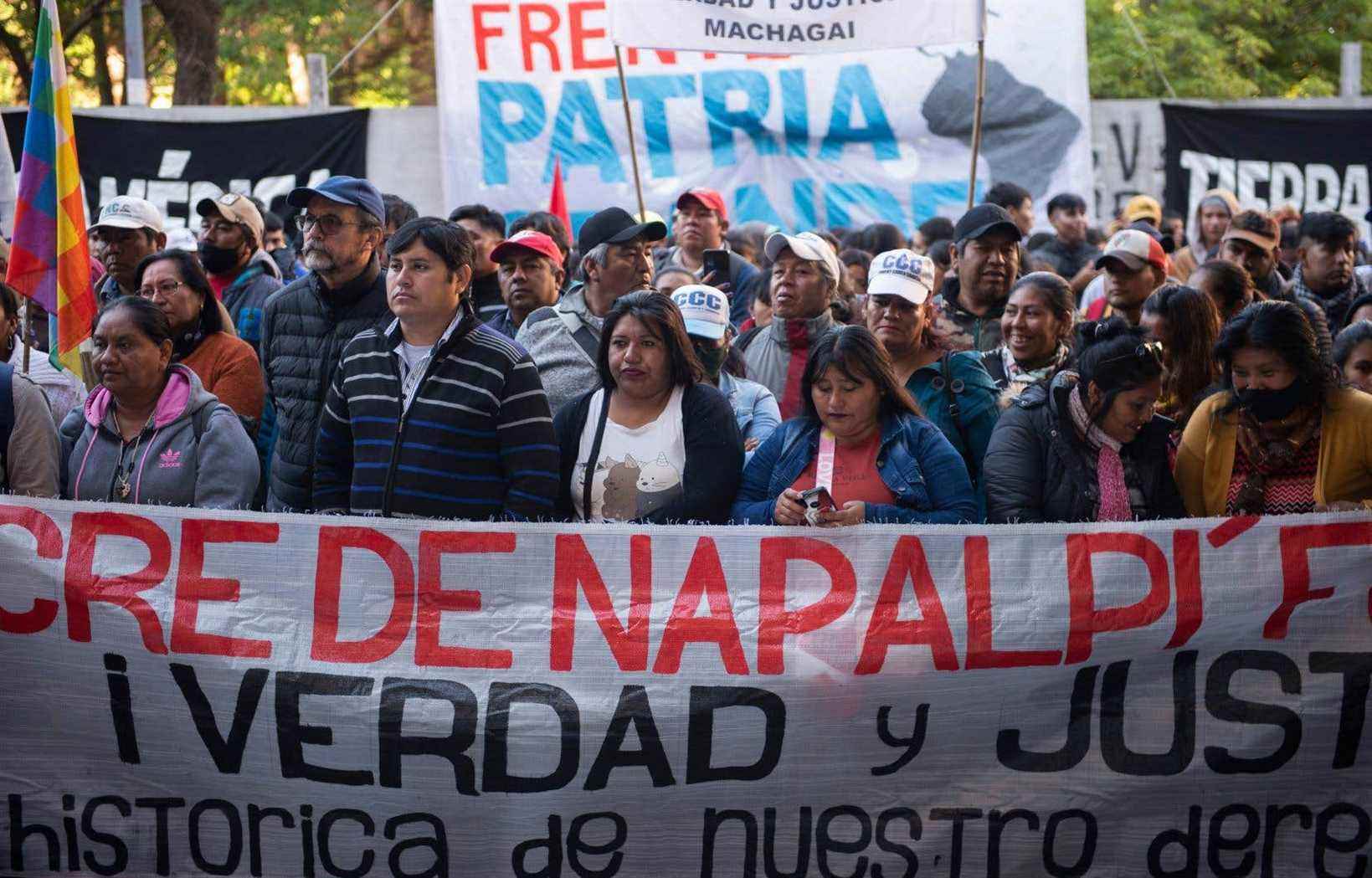Almost a century later, the Argentine justice looks into the massacre of more than 300 members of the Qom and Moqoit indigenous peoples, a trial without “culprit”, largely symbolic, but an unprecedented step towards a truth for the natives who are not very audible in the history of the country.
The “truth trial”, which will stretch over nine hearings spread over a month, began on Tuesday in a court in Resistencia (northeast), in the province of Chaco, where, on July 19, 1924, what is known as “the Napalpi massacre”.
That day, a force of around 100 police, military and civilian settlers opened fire on members of the Qom (or Toba) and Moqoit (Mocoví) communities in an Amerindian reserve that actually serves as a reservoir of labor for the cotton fields and where a revolt has just taken place against living conditions of quasi-slavery.
The massacre caused several hundred deaths, between 300 and 500, according to survivors, men, women, children whose bodies were sometimes mutilated, then thrown into a common grave. The crackdown continued for several months, according to the (governmental) Human Rights Secretariat.
“This trial for the truth seeks to approach the reality of the facts. It does not seek criminal responsibility, but to uncover the truth, in order to rehabilitate the memory of peoples, to heal wounds, to repair and also to activate the memory and the awareness that these human rights violations must not be repeated”, said Judge Zunilda Niremperger opening the trial.
“We are going to demonstrate in a concrete and clear way who participated, and who was responsible for this genocide”, declared the federal prosecutor Federico Garniel, in charge of the accusation.
The province of Chaco, the Secretariat of Human Rights and the Institute of Aboriginal Chaqueño are co-plaintiffs in the procedure.
An “invisible drama that re-emerges”
The massacre was qualified by justice as a crime against humanity, which gives it an imprescriptible character.
The procedure began in 2004, with, since then, the patient collection of clues and testimonies and a desire to hear from all the parties, descendants of the settlers as well as the indigenous communities.
Quite incredible after almost a century: the investigation allowed the authorities to find eyewitnesses. The participants in the trial were also able to hear the testimony, filmed in 2014, of Pedro Valquinta, centenarian who has since died, then that of Rosa Grilo, who would have “approximately” between 110 and 114 years old and who could also testify in person at the hearing. if his health permits.
“For me, it’s sad, they killed my dad. I almost don’t want to remember anymore. [Ce sont] sad things. Many people, they killed, ”said Rosa Grilo in a mixture of Spanish and Qom language, in testimony filmed in 2018 as part of the investigation and broadcast during the hearing on Tuesday, partly broadcast in line.
“I was a child, but not that small […] My grandfather and my mum were shouting “run, run”, and we fled towards the forest. There we lived eating carobs, drinking water from thistles […] I don’t know why they killed children, old people. Lots of pain…” Rosa said.
In another filmed document, Juan Chico, a historian of Qom origin who died last year of COVID-19, explained how Napalpi is “a subject that is very dear to us, that has become invisible, but which, in recent years, has started to re-emerge. “There is a cultural memory in communities that must be received by justice,” he said.
Historians regularly recall how the construction of Argentina as a nation throughout the 19and century, went through a submission of indigenous peoples that amounted to extermination.
More than any other, the episode says “the Conquest of the desert”, not desert at all, which incorporated Patagonia into the Argentine nation at the cost of at least 14,000 deaths among the southernmost ethnic groups.
Only about one million Argentines, out of 45 million inhabitants, define themselves today as members or descendants of one of the 39 original ethnic groups, according to the 2010 census. Since 1994, the Constitution recognizes the rights of indigenous peoples.
